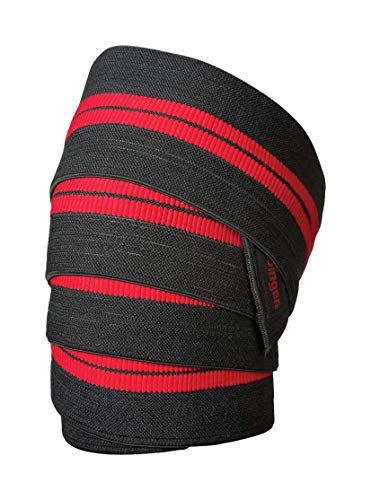This is Your Quick Training Tip, a chance to learn how to work smarter in just a few moments so you can get right to your workout.
If you peek inside a competitive powerlifter’s gym bag, you’ll find a whole bunch of gear that everyday lifters might not use on a daily basis. Folded in between the weight belt and wrist straps, you’ll find the knee wraps.
Constructed of thick, elasticized polyester or cotton canvas, the wraps are used to increase stability and power during super-heavy squats, helping the elite strongmen—and women—put up more weight. And those benefits have been backed by science, which is likely why knee wraps are increasingly showing up in ordinary gymgoers bags as well.
But just because the wraps work doesn’t mean that you should use them. First of all, knee wraps can decrease quadriceps activation by almost 20 percent thanks to the elastic energy they provide, according to a study in The Journal of Strength and Conditioning Research. That’s a problem if you’re trying to build muscle and strength. Second, having your knees bound tightly when you squat can alter your form, not only changing the muscles targeted, but also compromising the integrity of your knees and increasing your risk of injuring them, according to a study by researchers at the University of Chichester.
In short, unless you’re a powerlifter attempting a one-rep max squat in competition, where your only focus is clearing the highest number possible, using knee wraps can do more harm than good. Sure, they can help you move more weight, but only when wearing them, and your knees might ultimately pay the price.
So if you’re using the knee wraps in an attempt to increase your strength gains or protect two of your body’s most critical joints, don’t. There are better ways to do that.

If you are aiming to hit a 1RM and you feel the need to wear wraps, check out these from Harbinger. Just make sure that you’re lifting with the proper precautions, with spotters and other supervision if possible.
Your move: Never attempt to squat more weight than you can lift safely without assistive devices like knee wraps and weight belts. And if want to reduce your risk of knee injury from performing squats and other heavy lower-body exercises, do it the old-fashioned way: Execute every single rep with proper form.
That focus on quality reps, in turn, will help you properly target the muscles surrounding your knees, further reinforcing them and protecting them from injury.
Source: Read Full Article
